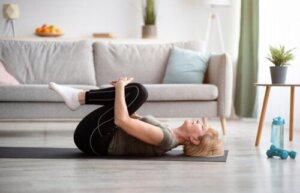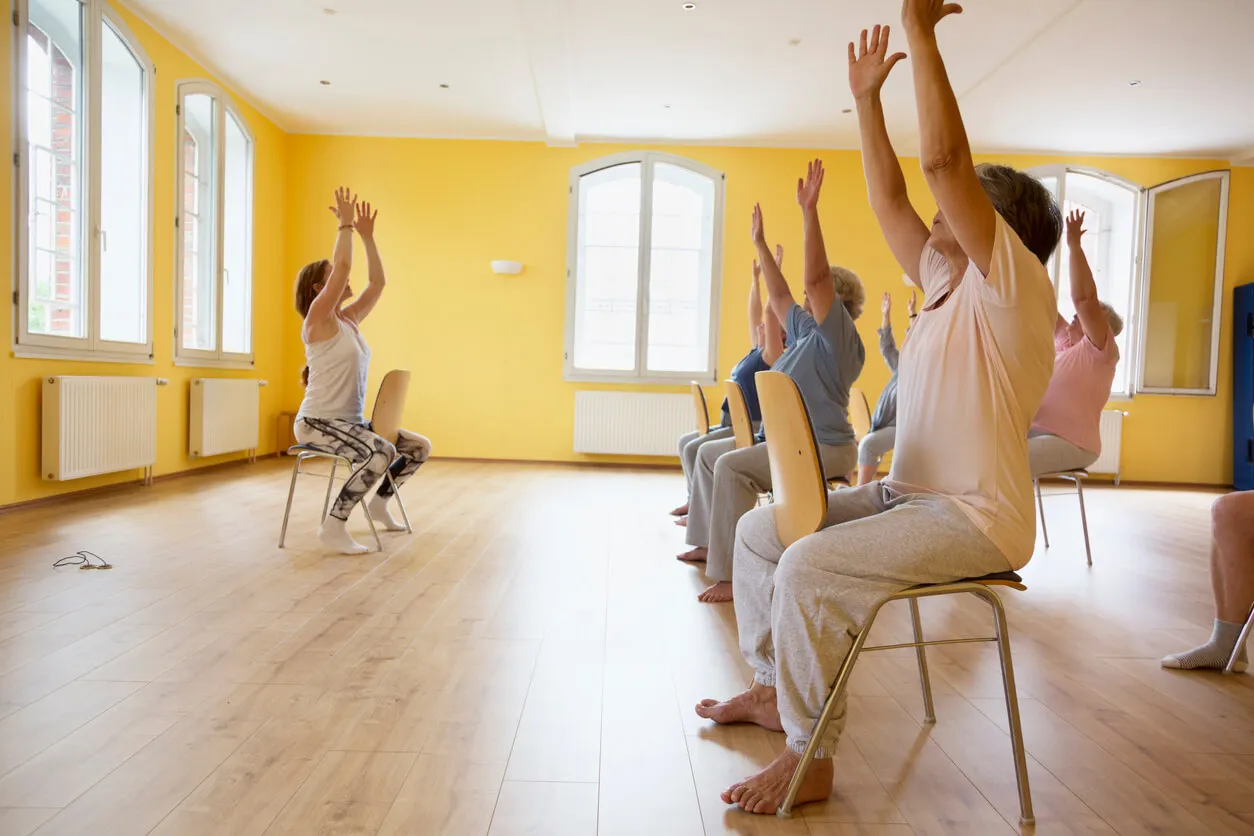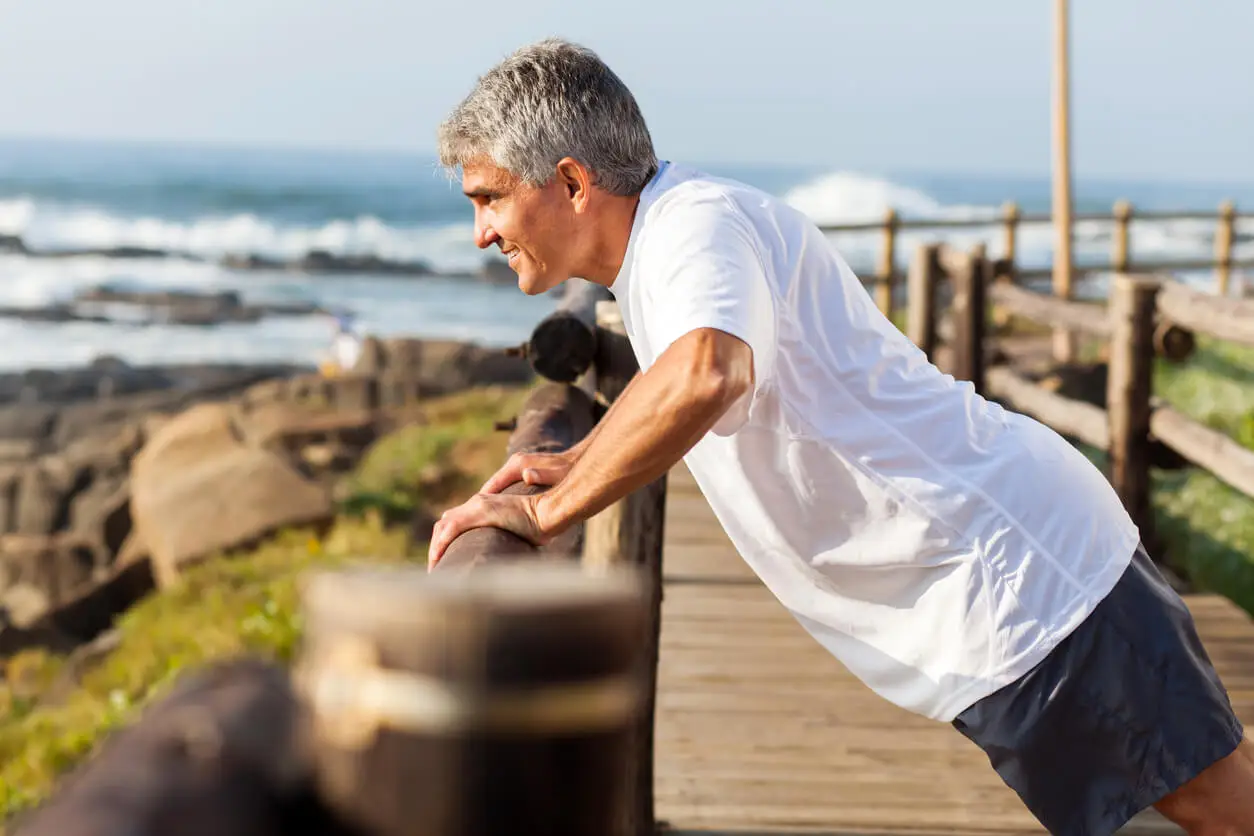7 Muscle-Building Exercises for Older Adults

Exercise is essential in order for you to stay healthy. Muscle-building exercises for older adults offer great benefits that help control joint and other pain. You also build endurance and strength to prevent falls. You could even reduce your risk of dying from heart disease.
You should keep in mind that, as your body ages, your muscles don’t respond to exercise the same way they used to. But this shouldn’t discourage you. On the contrary, the goal is for you to perform as many movements as possible, taking into account your limits.
Physical training can even help you with your memory. Old age is a stage of life that you need to know how to make the most of.
The best muscle-building exercises for older adults
Over the years, the body tends to change and adapt to its new needs. That’s why you have to give it a daily purpose to stay toned and healthy.
This is when exercises to boost muscle-building in older adults become relevant. Among the several simple routines you can practice, we have selected the following:

1. Hand and finger flexibility
Start with a chair. Sitting with your arms stretched out in front of you, begin to imagine that you have a wall in front of you. The goal is for you to raise your arms and move your fingers like someone climbing a wall.
When your arms reach above your head, you can move all 10 fingers for 10 seconds and then return them to their original position. To finish, bring your hands behind your back until they touch. Try to hold them together for several seconds while your arms stretch.
Read also: Chair Yoga Exercises for Older Adults
2. Walking toe-to-toe
Here you strengthen your legs while walking as far as you can toe-to-toe. Start by placing your right foot in front of your left foot so that the heel of your right foot touches the top of the toes of your left foot.
The idea is to switch back and forth between the two feet, but keep them together with the heel. Try to take more than 20 steps in this position.
3. Clock stretch
You need a chair to practice this. You have to imagine that you’re standing on the center of a clock. Your front is 12 o’clock and your back is facing towards 6 o’clock.
To support yourself, hold the chair with your left hand, while raising your right leg and extending your right arm. Then, with your arm, start marking different times on the imaginary clock. That is, form a “3 o’clock position”, then 6 o’clock, and then return to the initial position. The extension of the arms occurs while keeping the right leg bent upwards.
4. Back leg raises
Here you strengthen your glutes and lower back. Stand behind a chair and gently begin to lift your left leg backwards without bending your knees.
When you reach your maximum height, you hold that position for 5 seconds and then slowly return to the starting position. You can repeat this exercise about 10 times with each leg.
5. Wall push-ups
To perform this exercise you only need a wall, towards which you need to extend your arms while supporting both hands. Then flex these limbs, simulating a push-up on the wall.
Your feet must remain fixed to the floor while you move your body to the wall and when you push back. This movement can be repeated about 15 times.

6. Calf stretches
You can perform them seated or standing. If you choose to stand, stand facing a wall with your hands at eye level, placing your left leg behind your right.
Keep your left heel on the floor and bend your right knee. Try to hold the stretch for 15 to 30 seconds and repeat 2 to 4 times per leg.
If you want to practice it sitting down, you need the support of a towel. Once seated, and with your legs stretched, place the towel around one of your legs, pull each end towards your body, but keep your knee stretched. Hold this position for 15 to 30 seconds and repeat 2 to 4 times per leg.
7. Marching on the spot
This is a good balance exercise for older people, and the last in our muscle-building exercises for older adults. You start standing, lifting and exchanging the movement of your legs. That is, you lift your left leg high, while the other touches the ground, Then you switch.
As you raise and lower each leg, simulating a military march, you can raise and lower your arms in the same direction of each lower limb.
You may be interested in: Why You Need to Get Regular Physical Exercise
Seek professional advice before performing muscle-building exercises for older adults
It’s important for you to have a positive medical assessment regarding an exercise routine. If you have any conditions or illnesses, you should know how they affect your ability to comply with the workout.
Also, updating your medical history can identify the most useful movements for you and those you should definitely avoid, in order to prevent injury or further pain in one area.
It all boils down to the importance of being and feeling safe when performing exercises that benefit your body. This professional advice is responsible for promoting active aging and including older adults in health promotion strategies.
Last tips
The first thing you should take into account is to listen to your body and its limitations. Start each routine slowly. Increase gradually, without rushing.
If you’re looking to accelerate the resistance, it’s best to do it step by step, without skipping levels. Remember that the important thing is to avoid any type of injury.
Likewise, it’s essential that you stay focused on the goals you want to achieve so that when you’re going through difficult times, they will motivate you to continue and not give up.
Drink enough water while you do the exercises, even if you aren’t thirsty.
Finally, be prepared to adapt to any changes that may arise. If there are setbacks, you should be willing to discuss them with your doctor. This doesn’t mean a failure in the plan, but rather an opportunity for you to overcome the ailments.
All cited sources were thoroughly reviewed by our team to ensure their quality, reliability, currency, and validity. The bibliography of this article was considered reliable and of academic or scientific accuracy.
- Landinez N, Contreras K, Castro A. Proceso de envejecimiento, ejercicio y fisioterapia. Revista Cubana de Salud Pública. 2012; 38 (4): 562-580.
- Rodriguez M. El ejercicio físico y la calidad de vida en los adultos mayores. Revista pensamiento actual, Universidad de Costa Rica. 2006; 6 (7): 134-142.
- Molina A, Baeza C, Fernández D. Beneficios de la actividad física en personas mayores. Revista internacional de medicina y ciencias de la actividad física y el deporte. 2010; 10 (40): 556-576
This text is provided for informational purposes only and does not replace consultation with a professional. If in doubt, consult your specialist.








